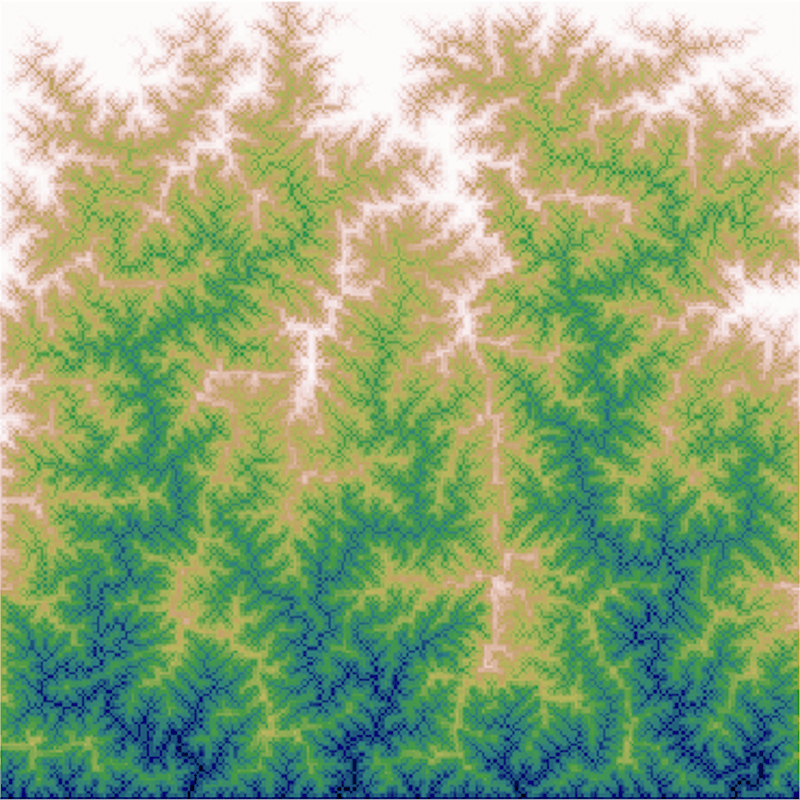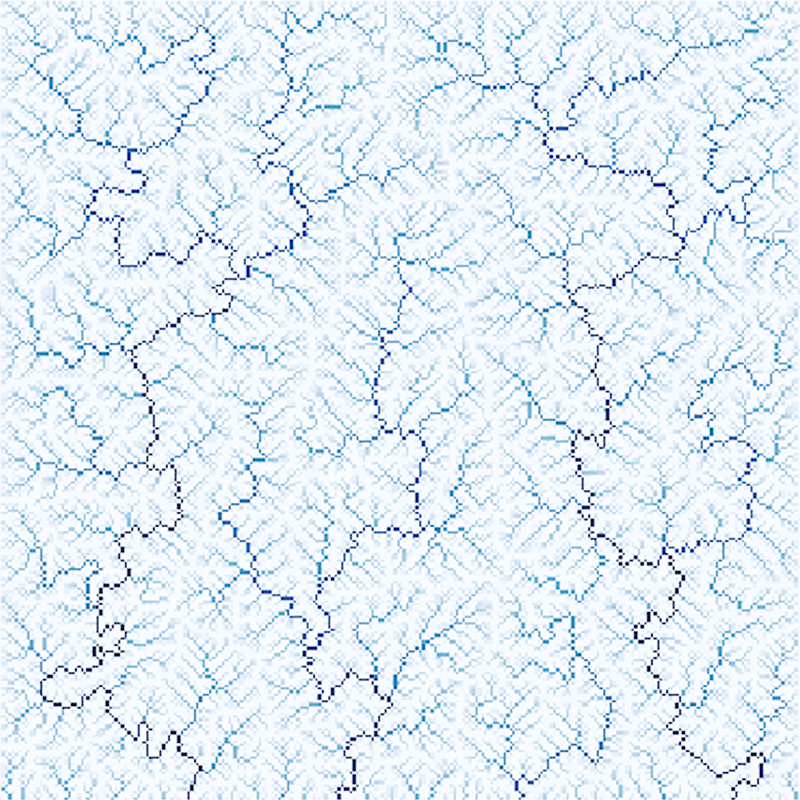In order to observe the formation of a river network, the cell heights are initialized as an inclined plane. The drainage network is a fictional construct, integrating continuous rainfall over time. It translates to the size and stream power of a river at the cell.
Algorithm
The erosion process is implemented by asynchronously updating all the cells (in one time t) according to the following steps:
-
Uplift:
The height of each cell is incremented, representing uplift.
-
Set drainage network:
-
Map all cells to their lowest neighbor; if none is lower than the cell itself, the cell is mapped to itself.
-
Fill sinks (no lower neighbor) with water, such that a lake forms and one of the lake cells has a lower neighbor or is an outflow boundary. All lake cells point to this cell.
-
Set drainage area. For every cell, pass the cells assigned drainage area (default 1., cummulated with that receved from other already called cells) downstream through the already initialized network (adding the drainage area to every cell on the way) and dump it on any cell passed by, that was not yet called or is an outflow boundary.
-
-
Stream power erosion
-
Toppling:
With a frequency f per cell evaluate the failure probability for slope. If toppling occurs, the slope is reduced to 1/3 of its initial value.

